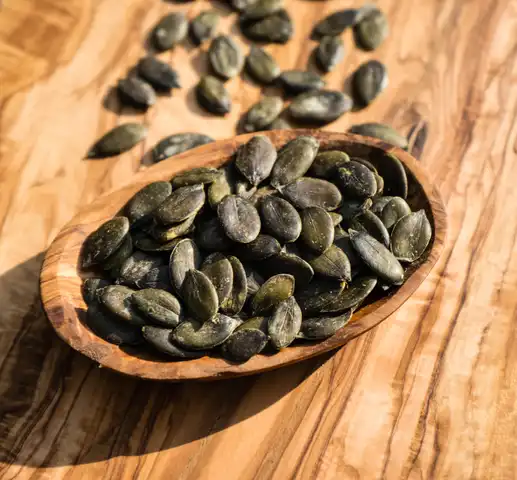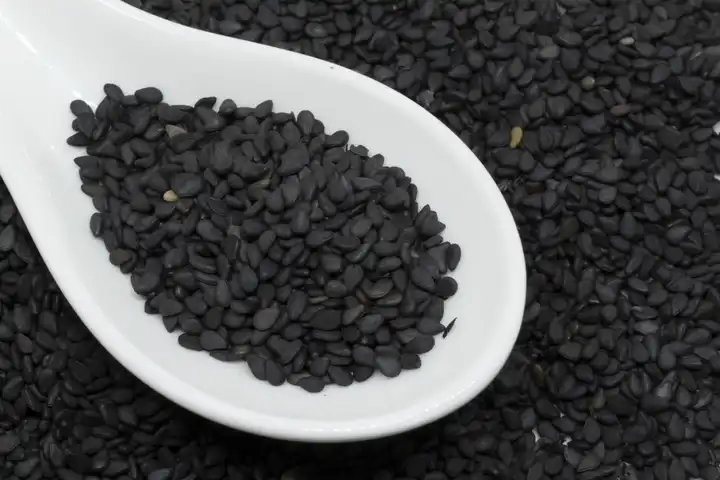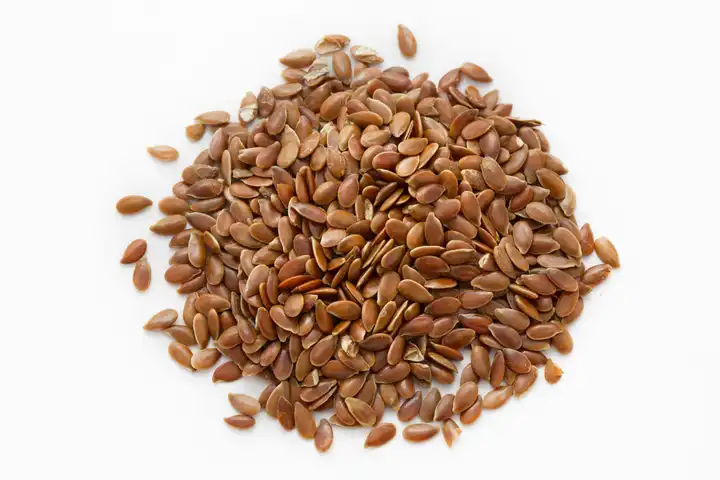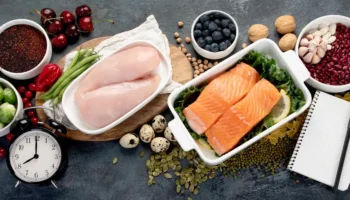As I approached my 40s, I started noticing changes in my skin, energy levels, and overall well-being. Like many women, I realized that pre-menopause was just around the corner. I wanted to find natural ways to support my body during this time, so I began researching foods that could help balance my hormones and improve my health. One of the simplest and most effective things I’ve introduced into my diet is seeds.
I’ve added a mix of pumpkin seeds, chia seeds, sesame seeds, sunflower seeds, and flaxseeds to my meals, and the difference has been incredible. Not only do I feel better overall, but I’ve also had people complimenting me on my hair and skin, which I attribute to these nutrient-packed seeds. They’re packed with essential nutrients that support hormonal balance, skin health, and overall well-being. Here’s why these seeds are so beneficial for women, especially during pre-menopause.

1. Pumpkin Seeds – Rich in Magnesium & Zinc
Pumpkin seeds are a powerhouse for pre-menopausal women due to their high magnesium and zinc content.
• Magnesium helps regulate mood, reduce stress, and support bone health, which is crucial as estrogen levels decline.
• Zinc plays a key role in immune function and skin repair, helping to maintain a youthful glow.
• Healthy fats & phytoestrogens in pumpkin seeds contribute to hormonal balance and cardiovascular health.
• How to Consume: Best eaten raw for maximum nutrient retention. Add 1 tablespoon per day to salads, yogurt, or smoothies.
• Research: Studies suggest that magnesium supplementation can help alleviate menopausal symptoms like anxiety and insomnia (Healthline).
2. Chia Seeds – Omega-3 and Fiber Powerhouse
Chia seeds are an excellent source of omega-3 fatty acids, which support brain health, reduce inflammation, and promote glowing skin.
• High fiber content helps regulate digestion and supports a healthy gut microbiome, essential for hormone regulation.
• Calcium & phosphorus support bone strength and density.
• How to Consume: Soaking them before consumption enhances nutrient absorption. Add 1 tablespoon per day to smoothies, oatmeal, or make chia pudding.
• Research: Studies show that omega-3s can improve cognitive function and reduce inflammation, both of which are essential during pre-menopause (Verywell Health).

3. Sesame Seeds – Rich in Calcium & Lignans
Sesame seeds are an excellent source of calcium, which is essential for bone health during pre-menopause.
• Lignans in sesame seeds have natural phytoestrogens that help balance estrogen levels.
• High in copper to support collagen production and maintain youthful skin.
• Sesamol, an antioxidant, protects against oxidative stress and premature aging.
• How to Consume: Lightly toasted enhances flavor and nutrient bioavailability. Use 1 tablespoon per day in stir-fries, salads, or tahini dressing.
• Research: Lignans in sesame seeds have been linked to improved hormonal balance and bone density (Medical News Today).
4. Sunflower Seeds – Vitamin E & Hormonal Balance
Sunflower seeds are packed with Vitamin E, a powerful antioxidant that supports skin health and hormonal balance.
• B vitamins (including B6) aid in neurotransmitter function, helping to reduce mood swings and fatigue.
• Selenium & antioxidants protect cells from oxidative damage and promote a healthy immune system.
• How to Consume: Best eaten raw or lightly toasted. Consume 1 tablespoon per day as a snack or sprinkled over salads and soups.
• Research: Vitamin E has been shown to help with menopausal symptoms, particularly hot flashes and skin elasticity (The Effect of Vitamin E Supplementation in Postmenopausal Women—A Systematic Review – PMCHealth).

5. Flaxseeds – Phytoestrogens & Omega-3
Flaxseeds are well-known for their high lignan content, which supports hormonal balance during pre-menopause.
• Alpha-linolenic acid (ALA), an omega-3 fatty acid, reduces inflammation and supports brain function.
• Fiber-rich properties improve digestion and gut health, which is crucial for optimal hormone metabolism.
• How to Consume: Best ground to enhance nutrient absorption. Add 1 tablespoon per day to smoothies, oatmeal, or yogurt.
• Research: Flaxseeds are a natural source of phytoestrogens, which help regulate estrogen levels during menopause (National Library of Medicine).
How to Incorporate These Seeds Into Your Diet
Incorporating these five nutrient-packed seeds into your daily meals can be simple and delicious. Here are some creative ways to add pumpkin seeds, chia seeds, sesame seeds, sunflower seeds, and flaxseeds into your routine:
- Smoothies & Shakes
Adding seeds to your smoothies is an easy way to boost their nutritional value.
• How to Use: Add 1 tablespoon of each seed (pumpkin, chia, sesame, sunflower, and flax) into your blender with fruits, vegetables, yogurt, or plant-based milk.
• Why It Works: This adds fiber, healthy fats, and protein to keep you feeling full longer. Chia and flax seeds are particularly great for thickening smoothies.
• Tip: If you prefer your smoothie to be extra creamy, you can blend the seeds with some water first to make a “seed paste” before adding other ingredients. - Oatmeal & Porridge
Oatmeal is a breakfast staple that’s easily customizable with seeds.
• How to Use: Top your warm oatmeal or porridge with 1 tablespoon of each seed. Stir them in for added texture, crunch, and nutrition.
• Why It Works: Oats provide a great base for fiber and heart-healthy carbohydrates, while the seeds supply additional omega-3s, protein, and antioxidants.
• Tip: Soak chia seeds in water or milk overnight for a creamier texture when added to your oats. - Yogurt Bowls
Yogurt bowls are a delicious and nutritious snack or breakfast option.
• How to Use: Layer Greek yogurt or dairy-free yogurt with your choice of seeds. Add some fresh fruit, honey, or a sprinkle of cinnamon for extra flavor.
• Why It Works: Yogurt is full of probiotics that support gut health, while the seeds provide vitamins, minerals, and healthy fats.
• Tip: Make your yogurt bowls more filling by adding 1 tablespoon of each seed to the mix. For extra crunch, sprinkle sunflower and sesame seeds on top. - Salads
Seeds can be sprinkled on salads to enhance the flavor and texture.
• How to Use: Sprinkle 1 tablespoon of each seed over your favorite salad. Add them to leafy greens, roasted vegetables, or grain-based salads like quinoa or couscous.
• Why It Works: Seeds are rich in healthy fats and protein, making your salad more satisfying and nutritionally balanced.
• Tip: For a more gourmet touch, lightly toast sesame seeds or sunflower seeds before adding them to your salad for a nutty, warm flavor. - Baking
Adding seeds to your baked goods is an excellent way to increase their nutritional profile without compromising flavor.
• How to Use: Mix 1 tablespoon of seeds into muffin, pancake, or bread dough. You can also sprinkle seeds on top of bread or crackers before baking to create a crunchy, flavorful topping.
• Why It Works: Seeds add texture and flavor to baked goods while providing essential nutrients like fiber, healthy fats, and minerals.
• Tip: Mix chia seeds into muffin or pancake batter to create a thicker consistency. Flaxseeds are also commonly used as an egg substitute in baking recipes. - Energy Balls or Bars
Create your own homemade energy snacks using seeds as a base.
• How to Use: Combine seeds, dates, nuts, and a bit of nut butter in a food processor. Shape the mixture into bite-sized balls or press it into a pan and cut into bars.
• Why It Works: These energy balls are a great source of sustained energy. The combination of seeds and nuts provides protein and healthy fats to fuel your day.
• Tip: Add some cocoa powder or vanilla extract for extra flavor. - Soups & Stews
Seeds can be used as a topping for soups and stews or blended into the broth for a thicker consistency.
• How to Use: Sprinkle 1 tablespoon of seeds on top of your soup or stew just before serving. You can also blend flaxseeds or chia seeds into the soup base for added creaminess.
• Why It Works: Seeds add a satisfying crunch and nutritional boost to hot dishes.
• Tip: Toast sunflower or pumpkin seeds and sprinkle them over a creamy soup, like butternut squash or tomato, for extra texture. - As a Snack
Seeds can be eaten on their own as a quick snack.
• How to Use: Take a small handful of mixed seeds and enjoy them raw or lightly toasted. You can mix pumpkin, sunflower, and sesame seeds for a simple, nutritious snack.
• Why It Works: Seeds are rich in protein and healthy fats, making them a filling, satisfying snack that keeps hunger at bay.
• Tip: If you’re on the go, portion out your seeds into small containers or bags for an easy snack whenever you need it. - Seed Butter
Seed butter is a fantastic alternative to peanut butter, especially for those with nut allergies.
• How to Use: Blend seeds like sunflower or pumpkin seeds in a food processor until smooth to make your own seed butter. Spread it on toast, crackers, or use it in smoothies.
• Why It Works: Seed butter provides a nutty, creamy texture with healthy fats, protein, and fiber.
• Tip: Add a pinch of salt, a drizzle of honey, or a sprinkle of cinnamon to your seed butter for extra flavor. - Smoothie Bowls
Create smoothie bowls packed with fruits and seeds for a refreshing and nutrient-dense meal.
• How to Use: Blend frozen fruit (like berries, mango, or banana) with a little liquid (milk or water), and then top with a mix of seeds.
• Why It Works: Smoothie bowls are visually appealing and customizable, giving you the chance to incorporate a variety of seeds and fruits for a balanced meal.
• Tip: Add coconut flakes, granola, or fresh berries to the top of your smoothie bowl for extra crunch. - Seed-Infused Water
Chia seeds, in particular, can be added to water for a hydrating, nutrient-packed drink.
• How to Use: Stir 1 tablespoon of chia seeds into water, and let them sit for about 10-15 minutes. The seeds will expand, creating a gel-like texture.
• Why It Works: Chia seeds absorb water, making them a hydrating and filling addition to your diet. They’re also packed with omega-3 fatty acids and fiber.
• Tip: Add lemon, lime, or cucumber slices for extra flavor in your chia water. - Salad Dressings
You can incorporate seeds directly into homemade salad dressings for added texture and nutritional benefits.
• How to Use: Blend 1 tablespoon of seeds (flaxseeds or sunflower seeds) with olive oil, apple cider vinegar, Dijon mustard, and a touch of honey to create a creamy dressing.
• Why It Works: The seeds add a creamy, thick consistency to the dressing, plus a nutritional boost.
• Tip: If you’re using flaxseeds, grind them first to enhance their absorption and nutrient availability.

By mixing these seeds into your meals, you’ll not only enjoy a variety of textures and flavors but also benefit from their numerous health advantages. The key is to make them a part of your daily routine, whether as a snack or a key ingredient in your meals. You can combine them in smoothies, salads, or even soups and baked goods. The possibilities are endless!
For more helpful tips on nutrition and hormone support during pre-menopause, check out these informative articles on Perimenopause Talks and 5 Foods and Supplements That Make a Difference.






